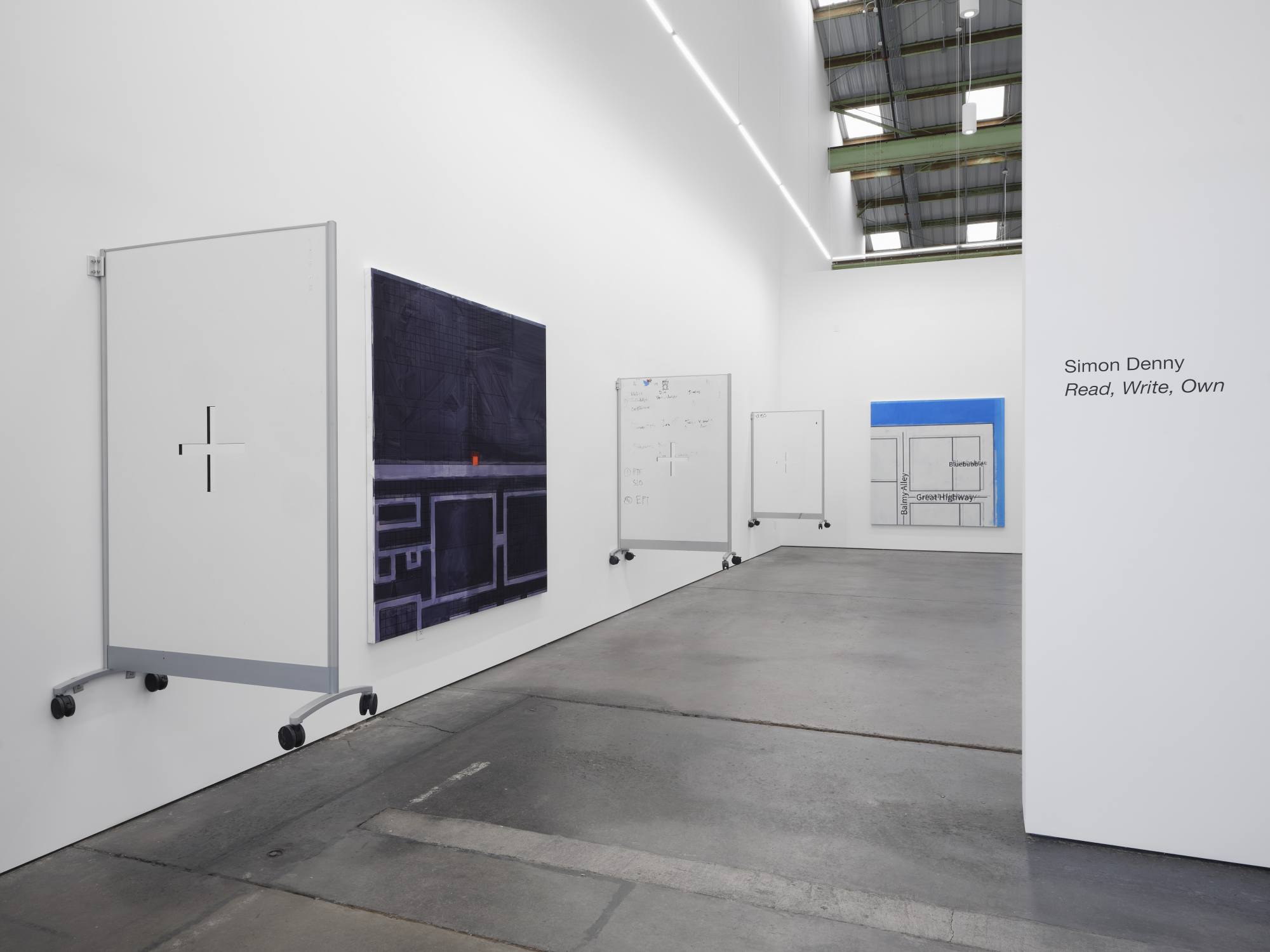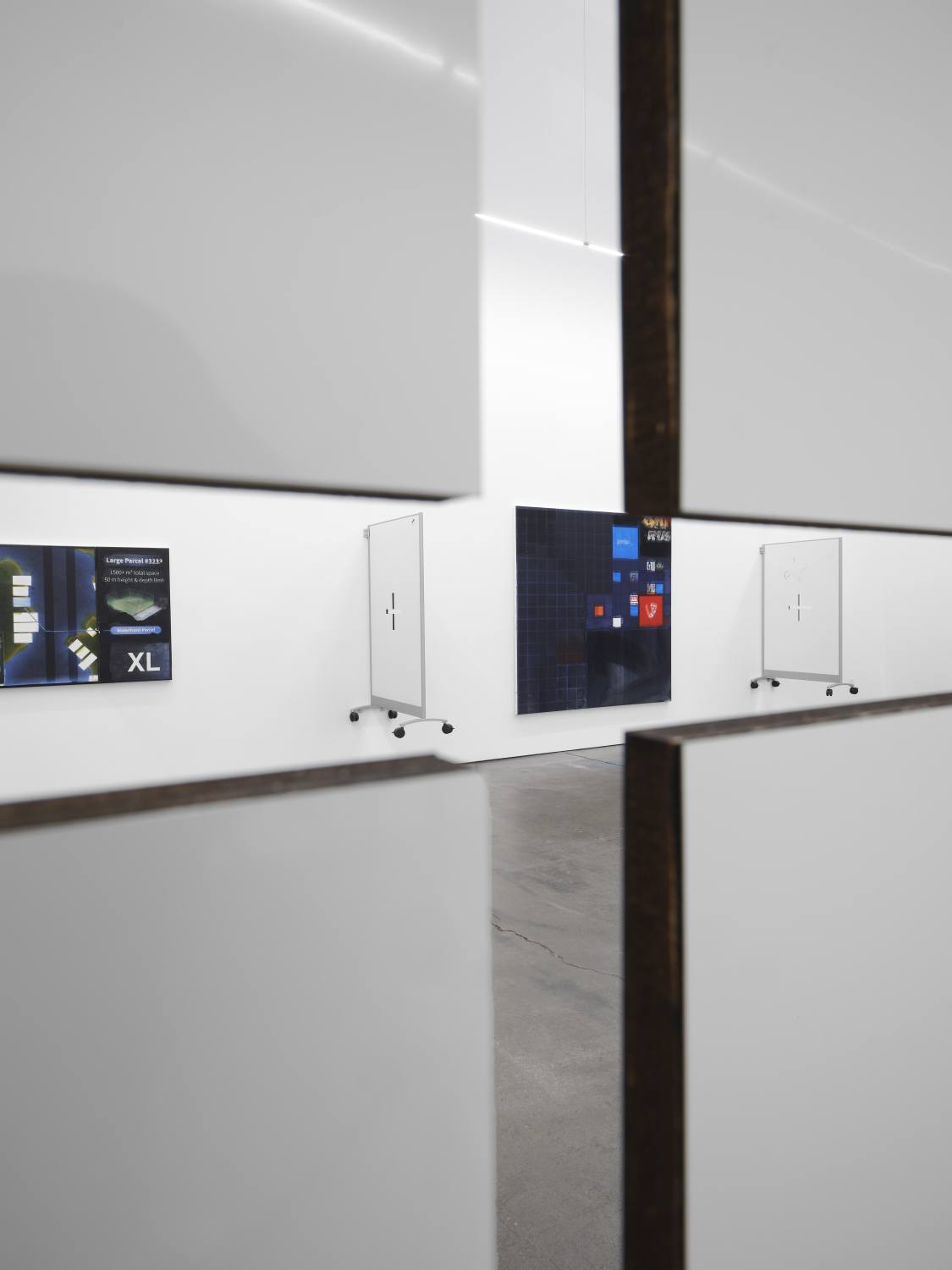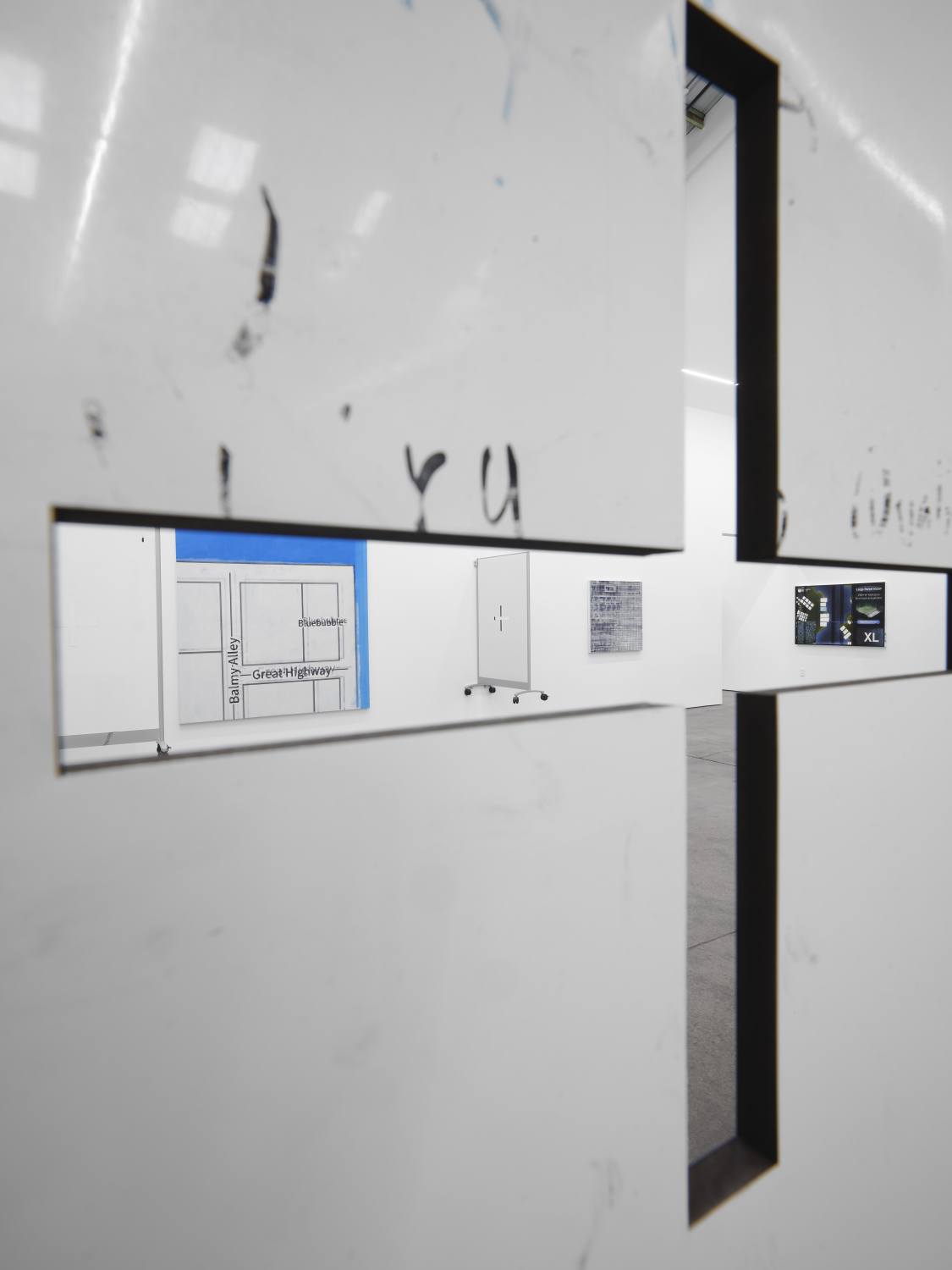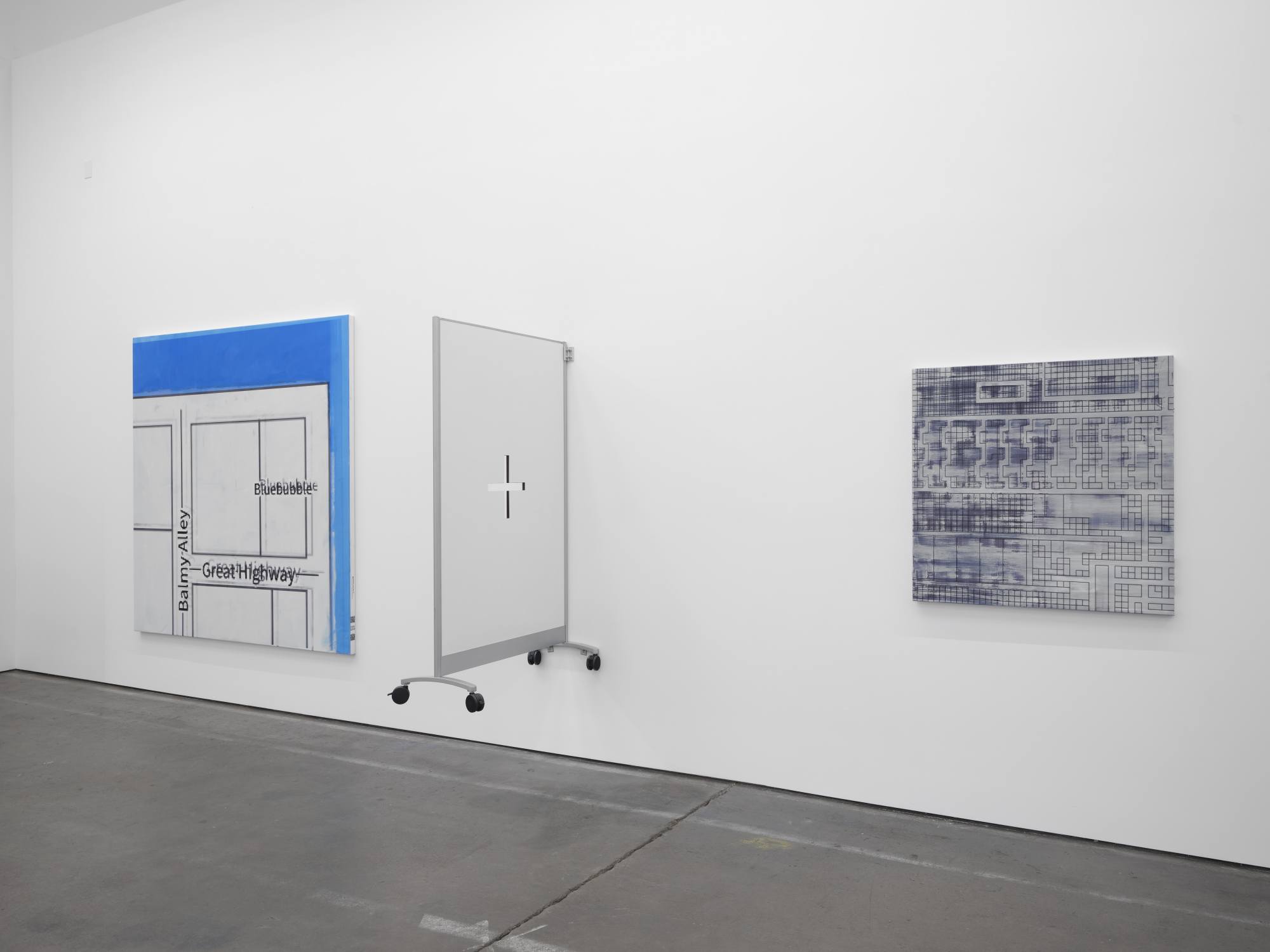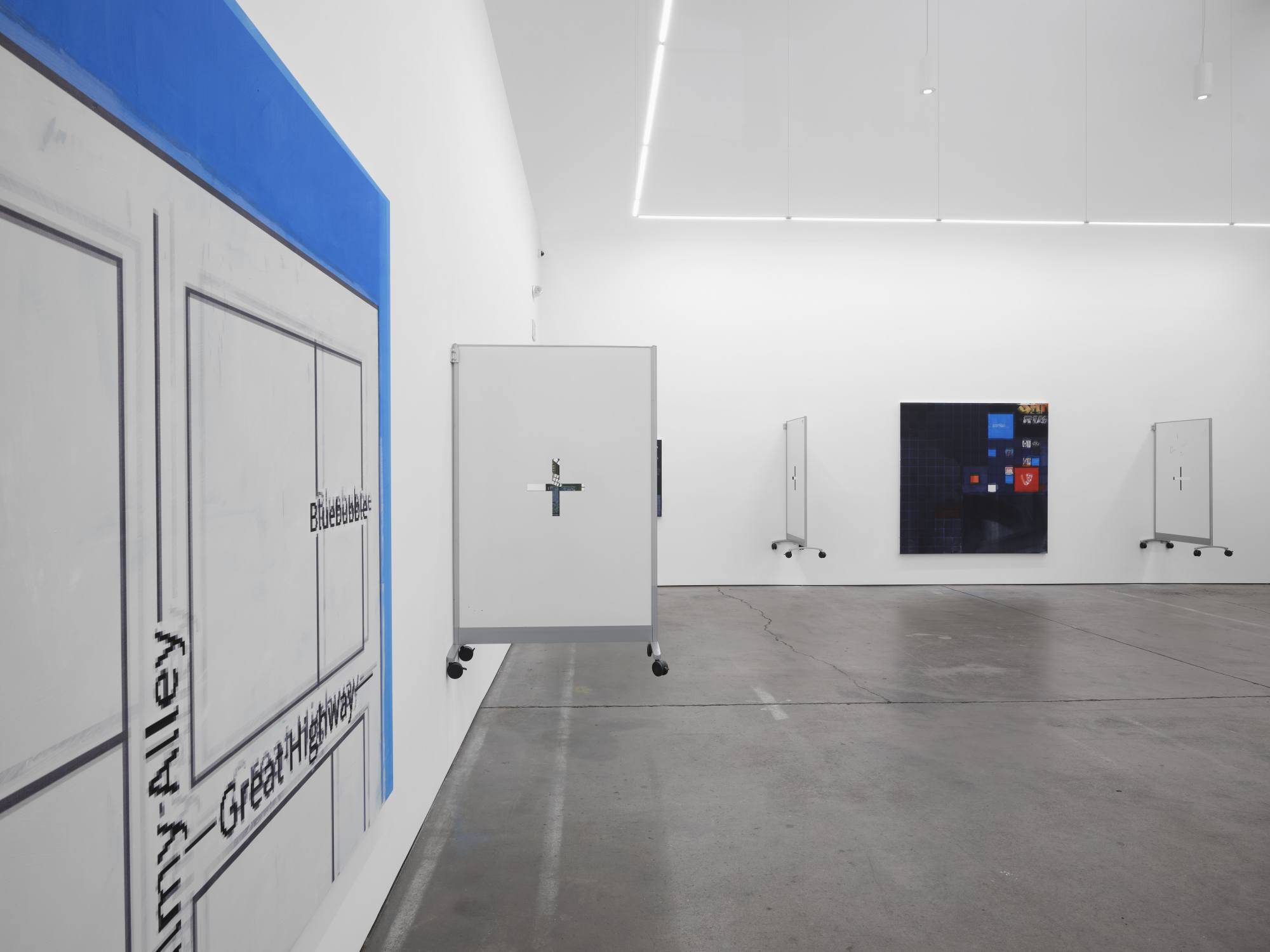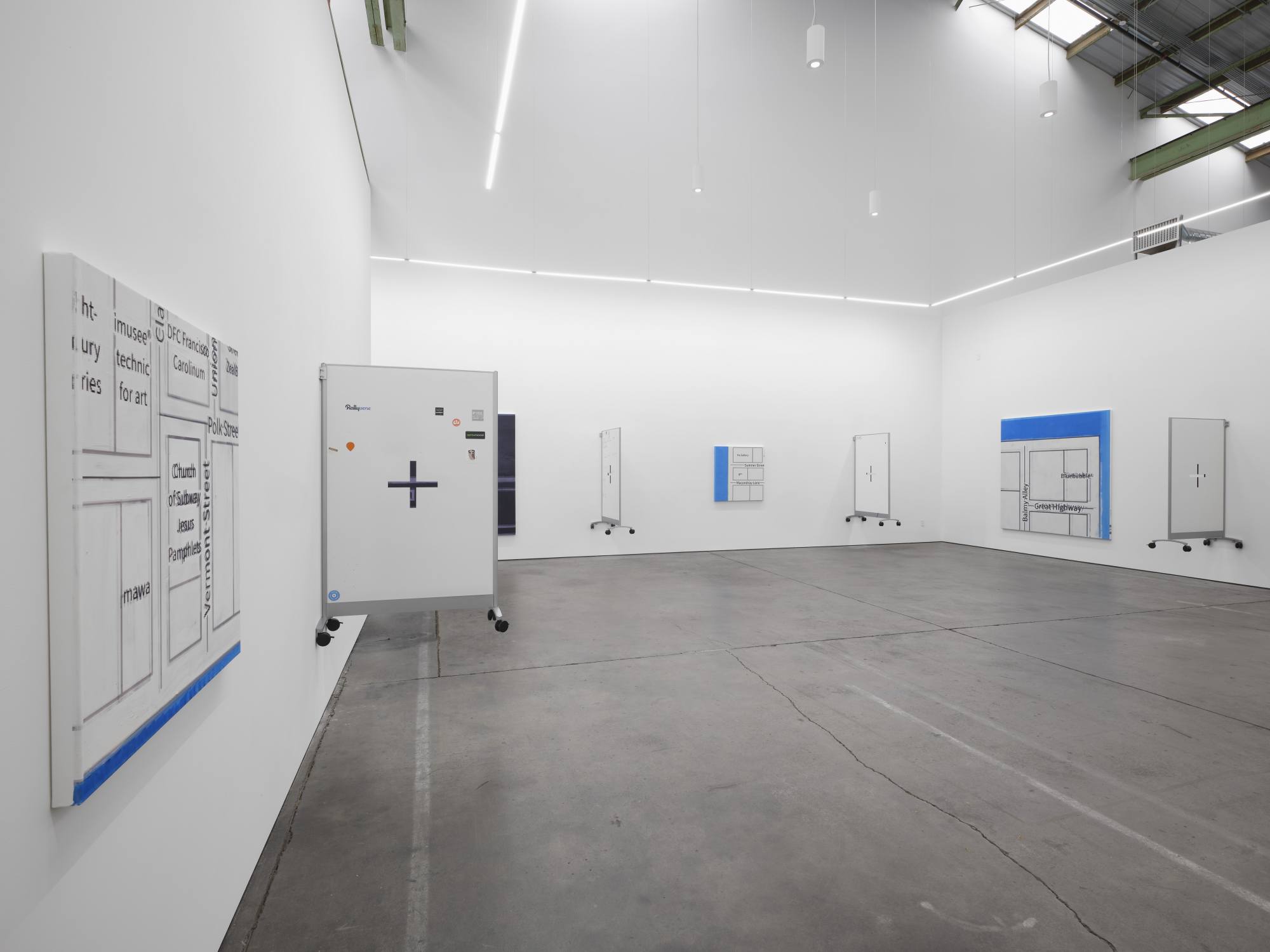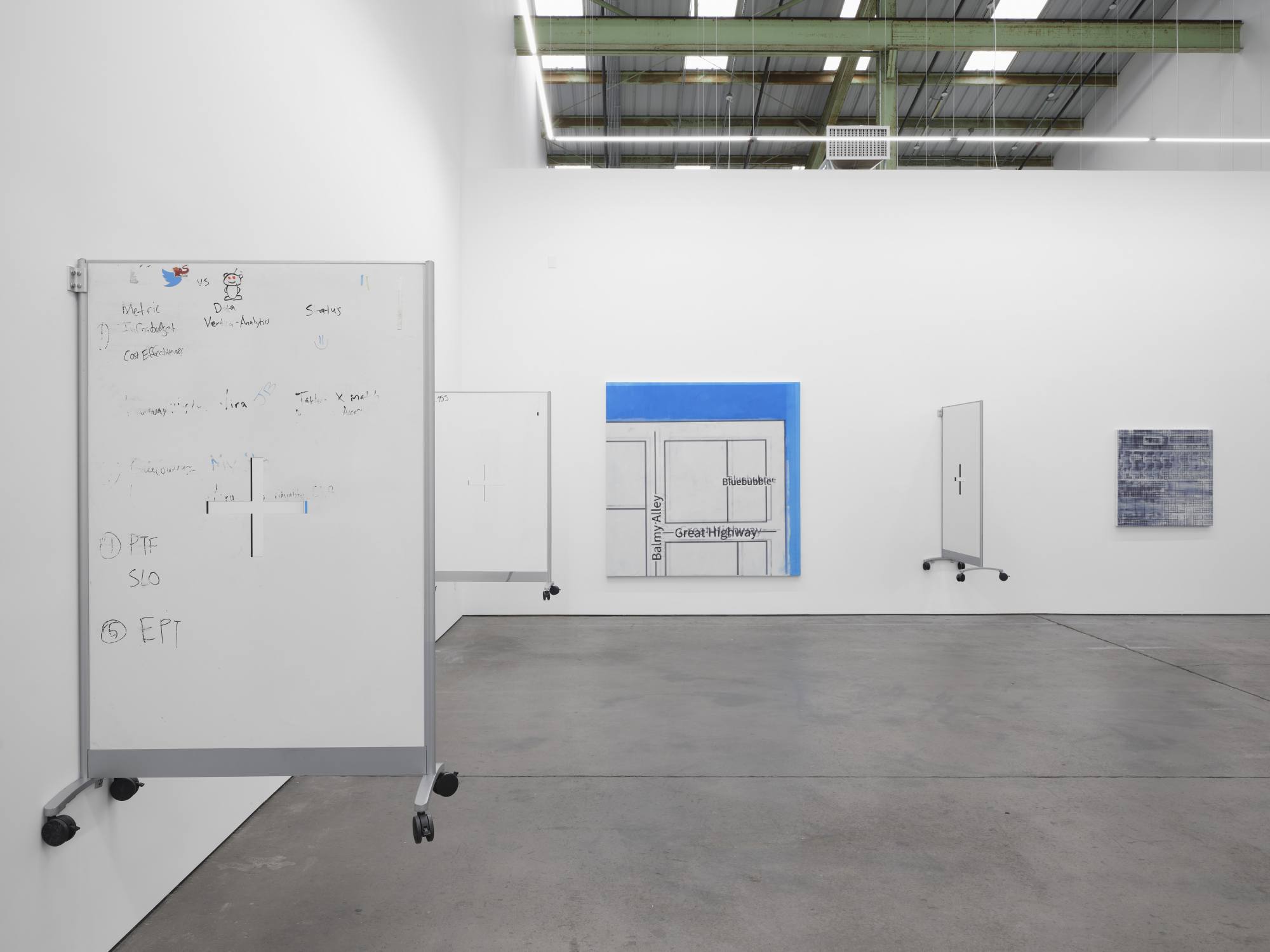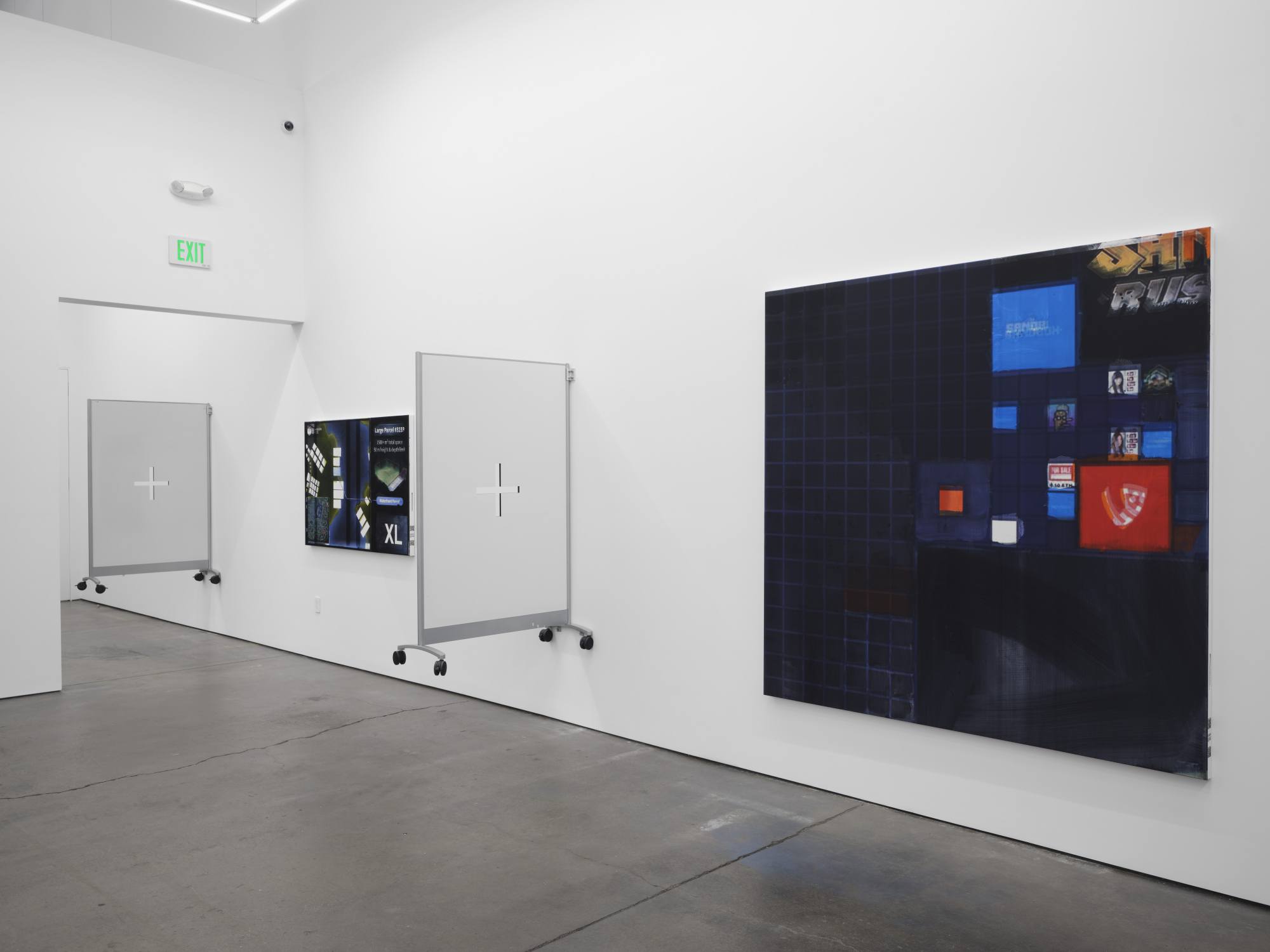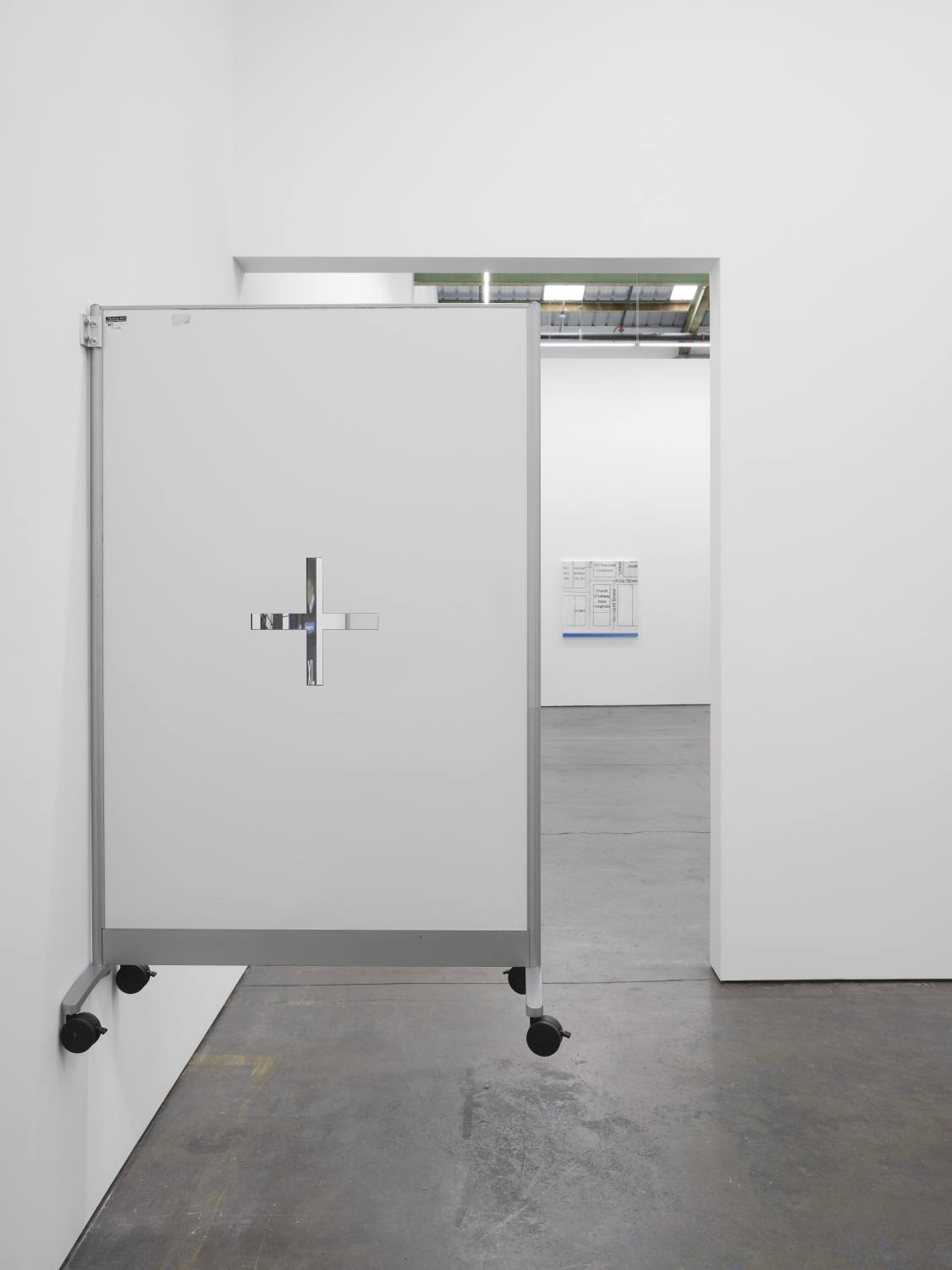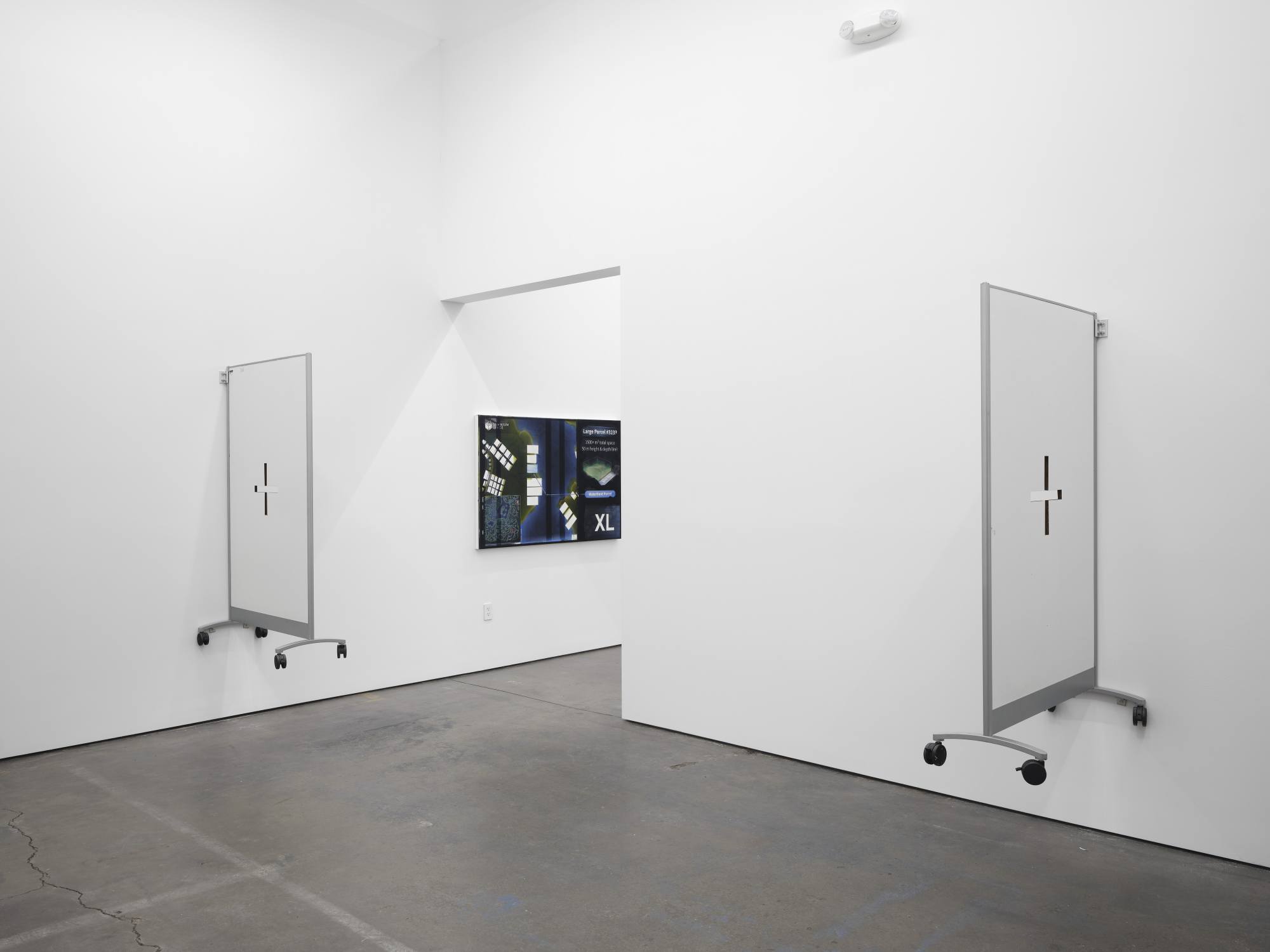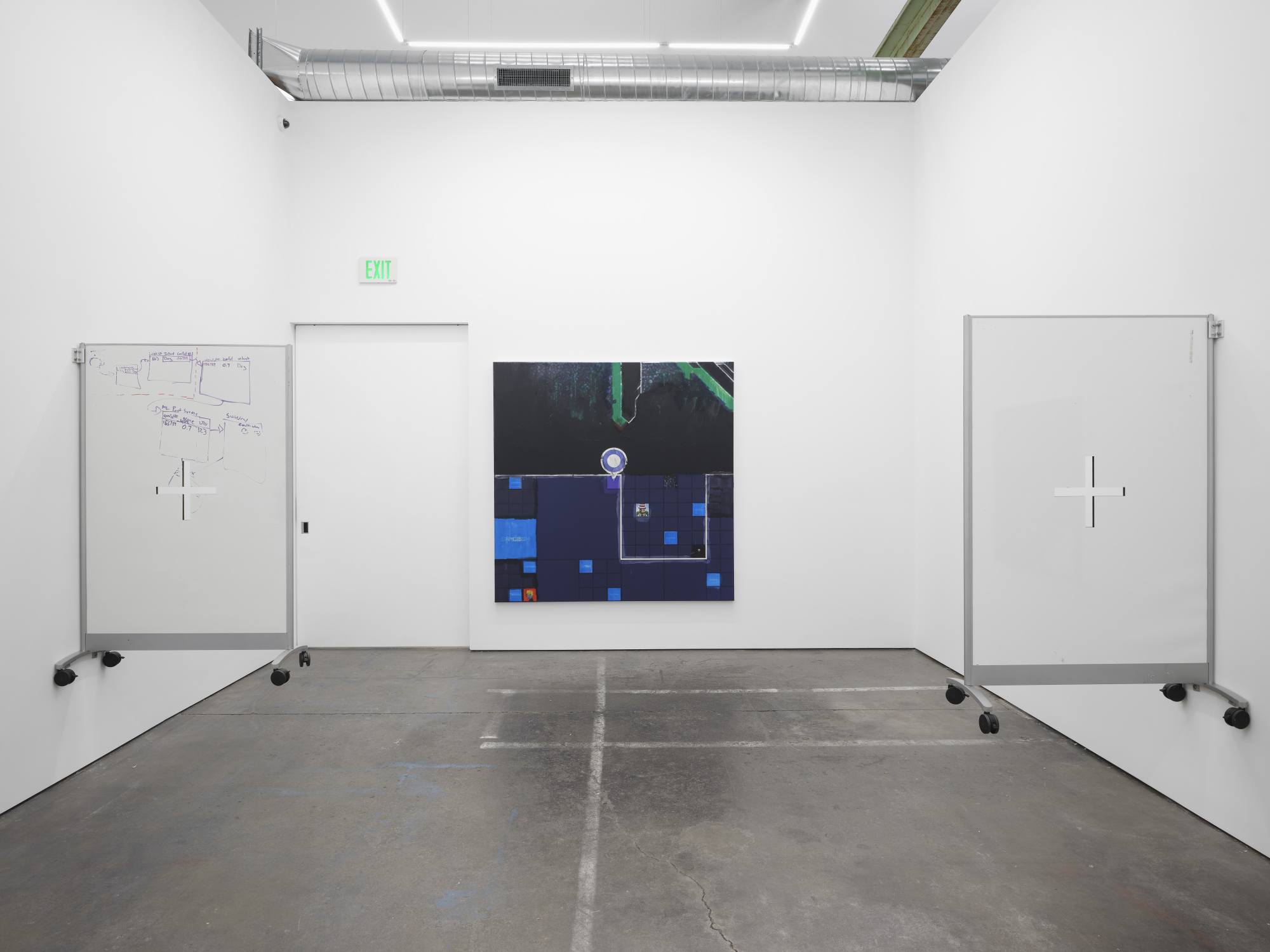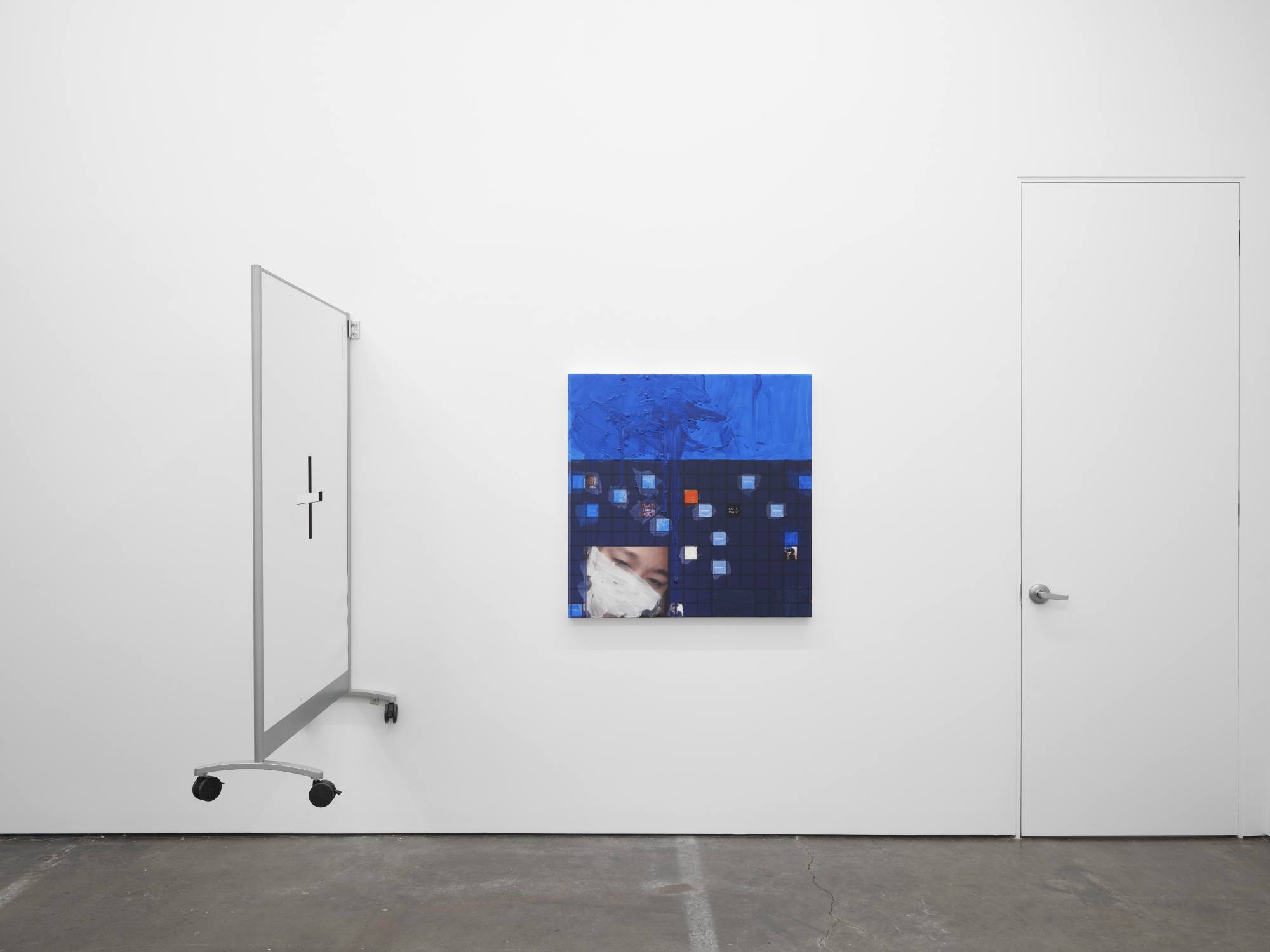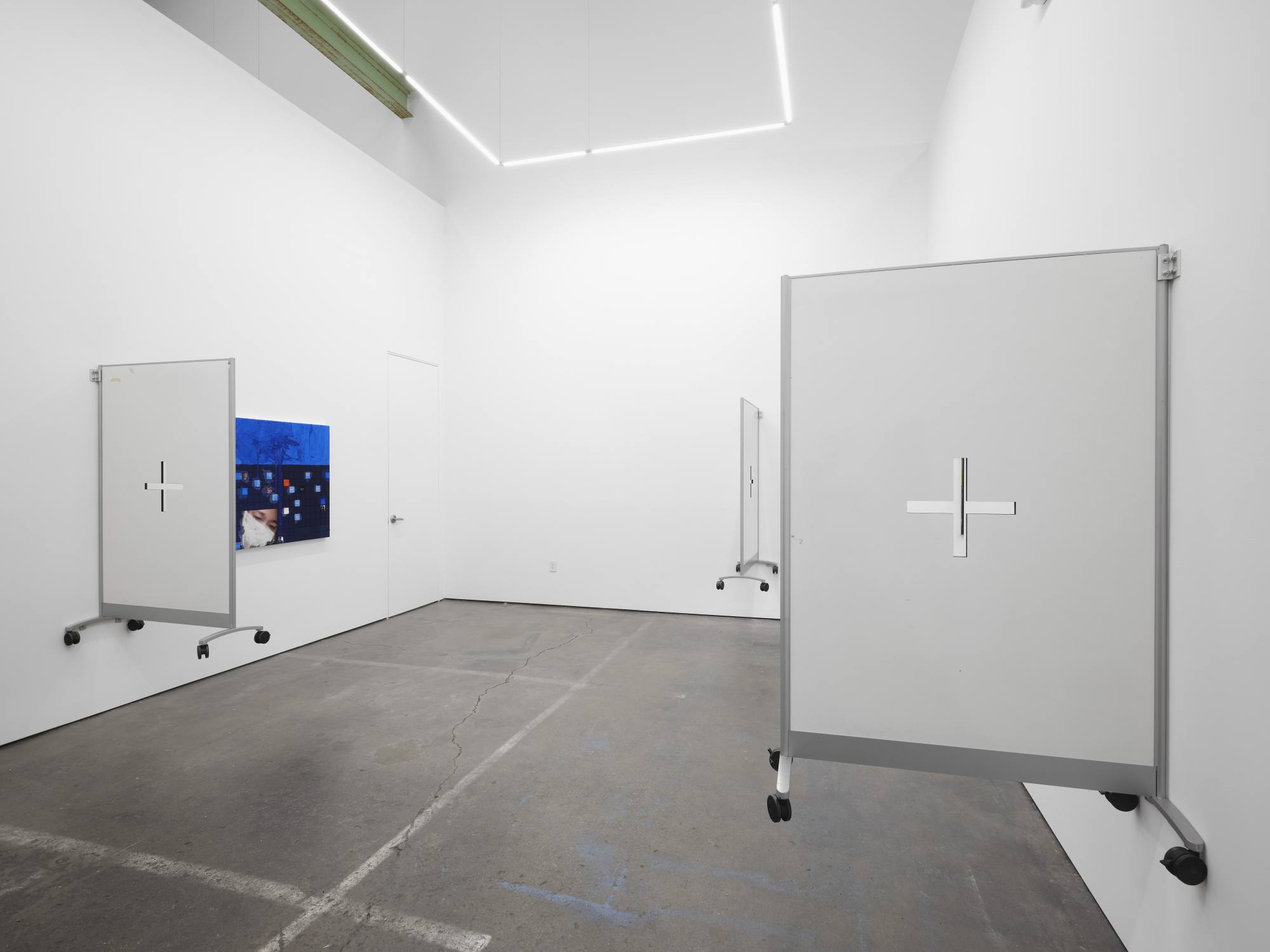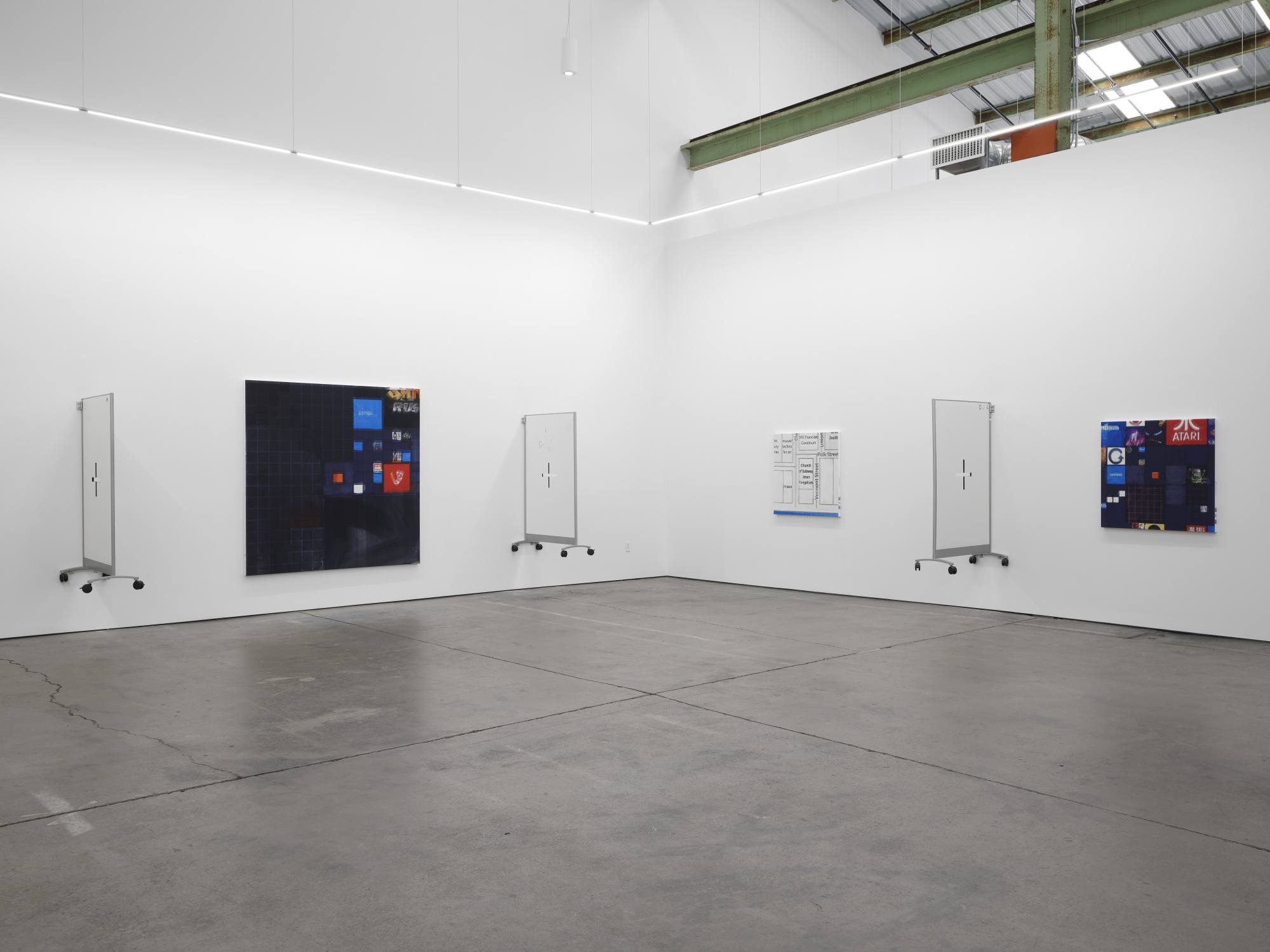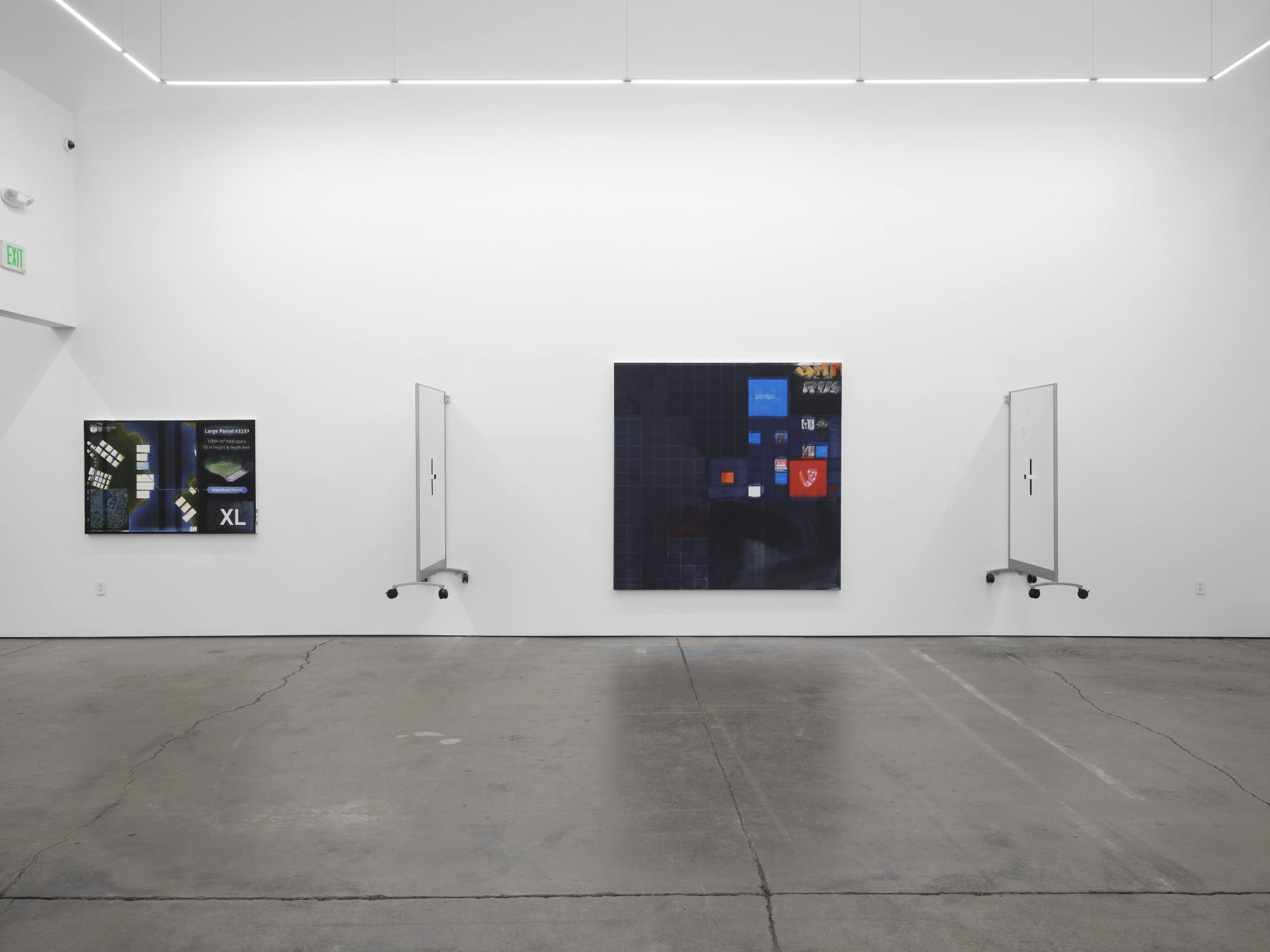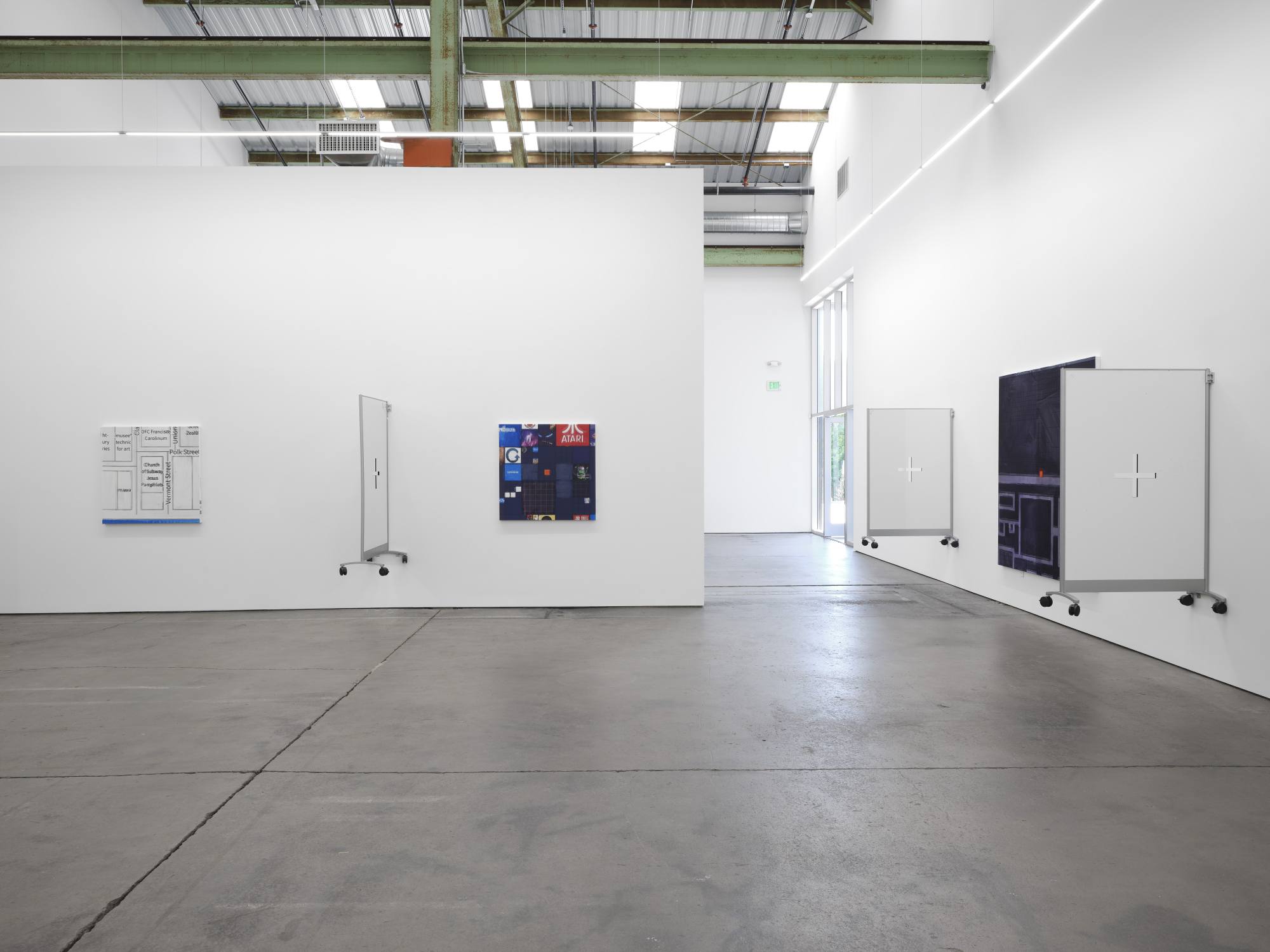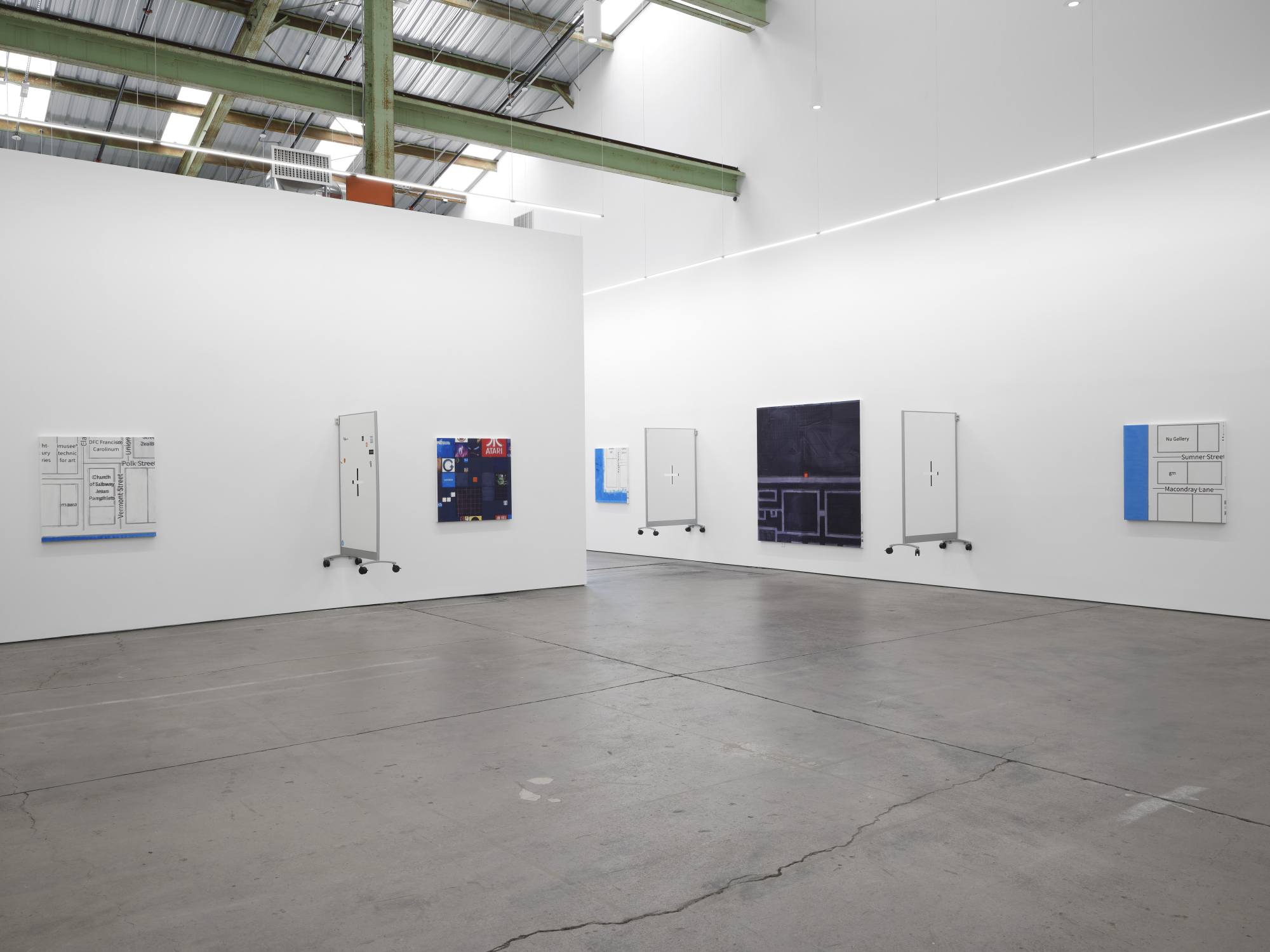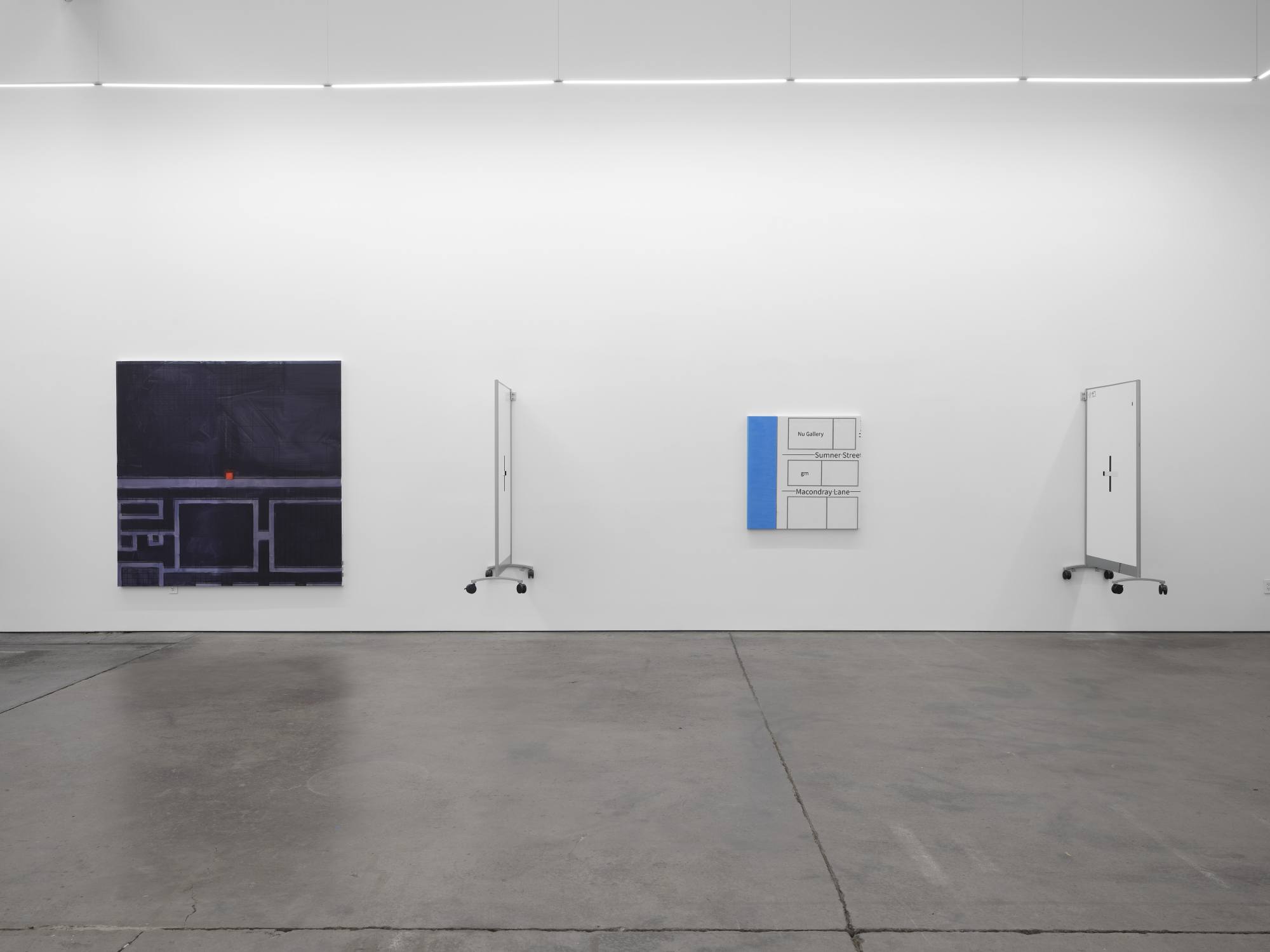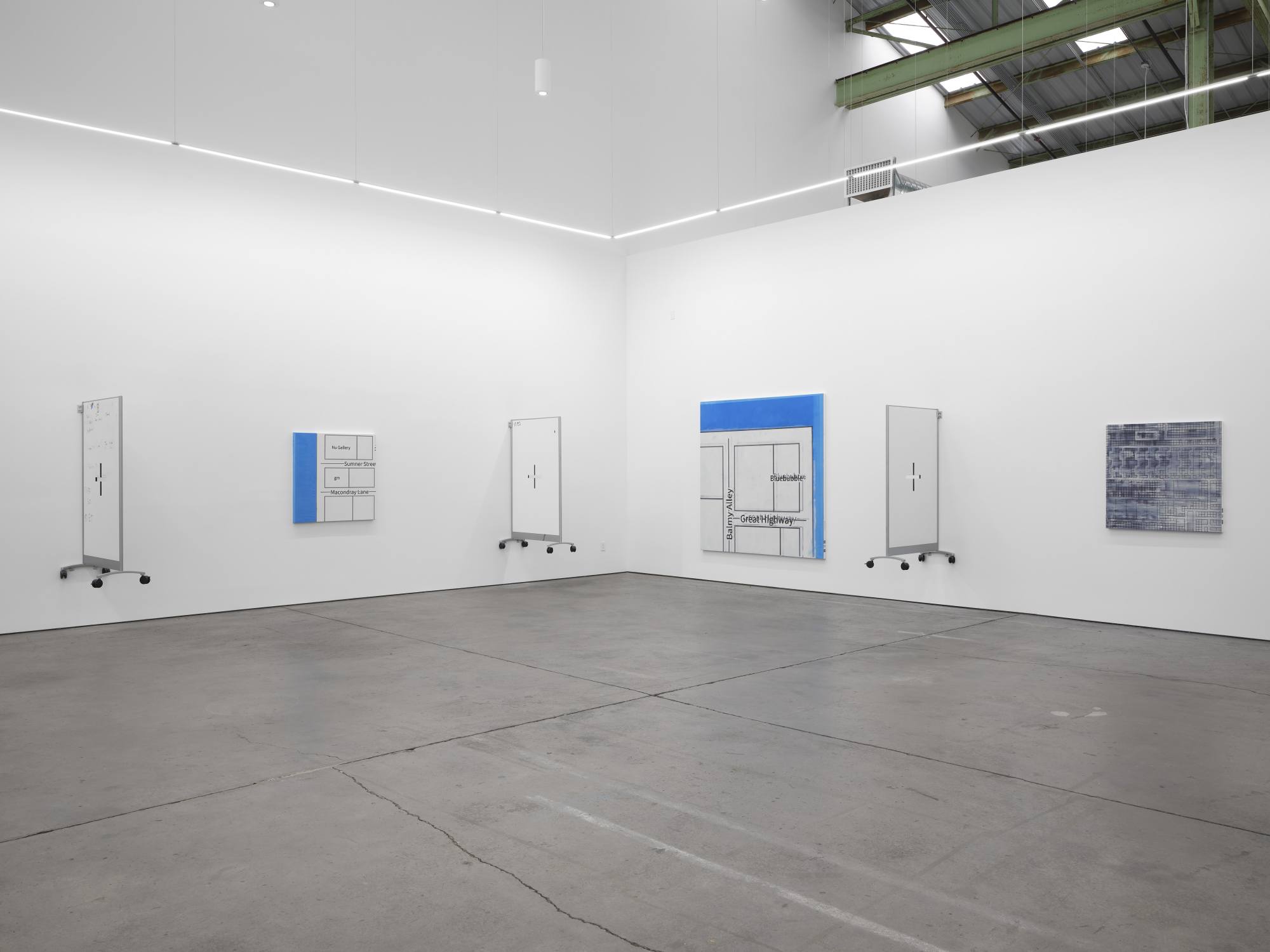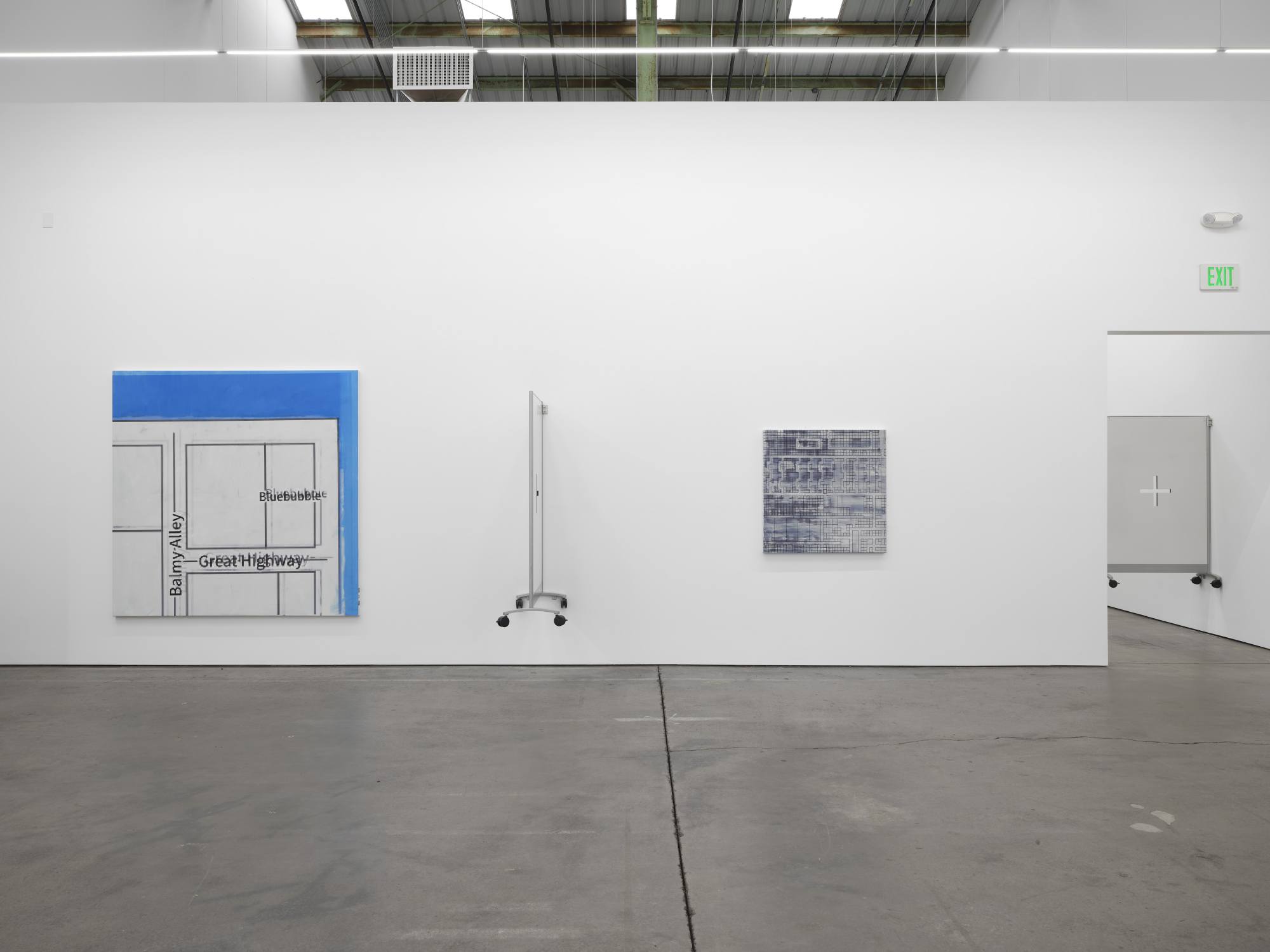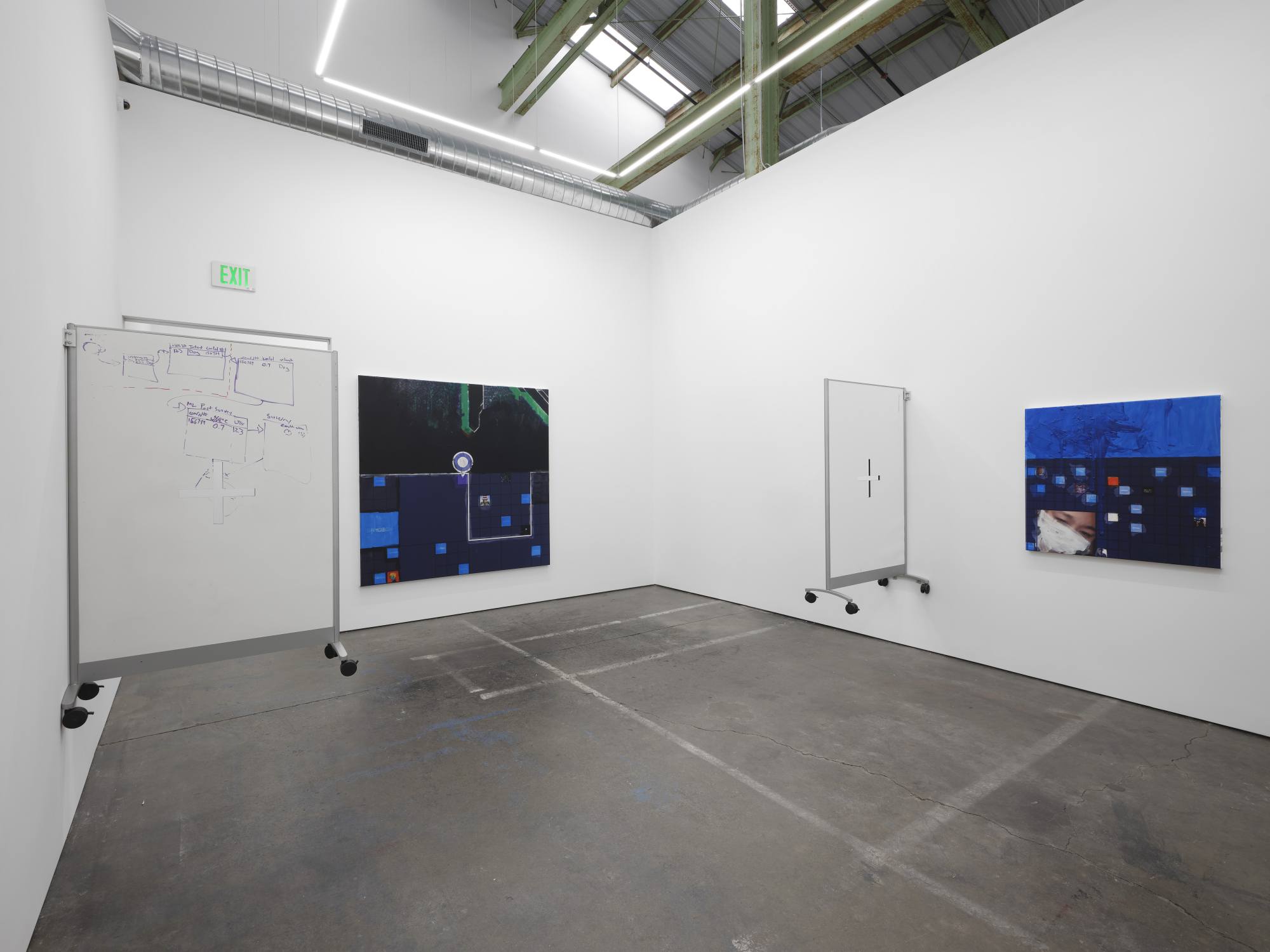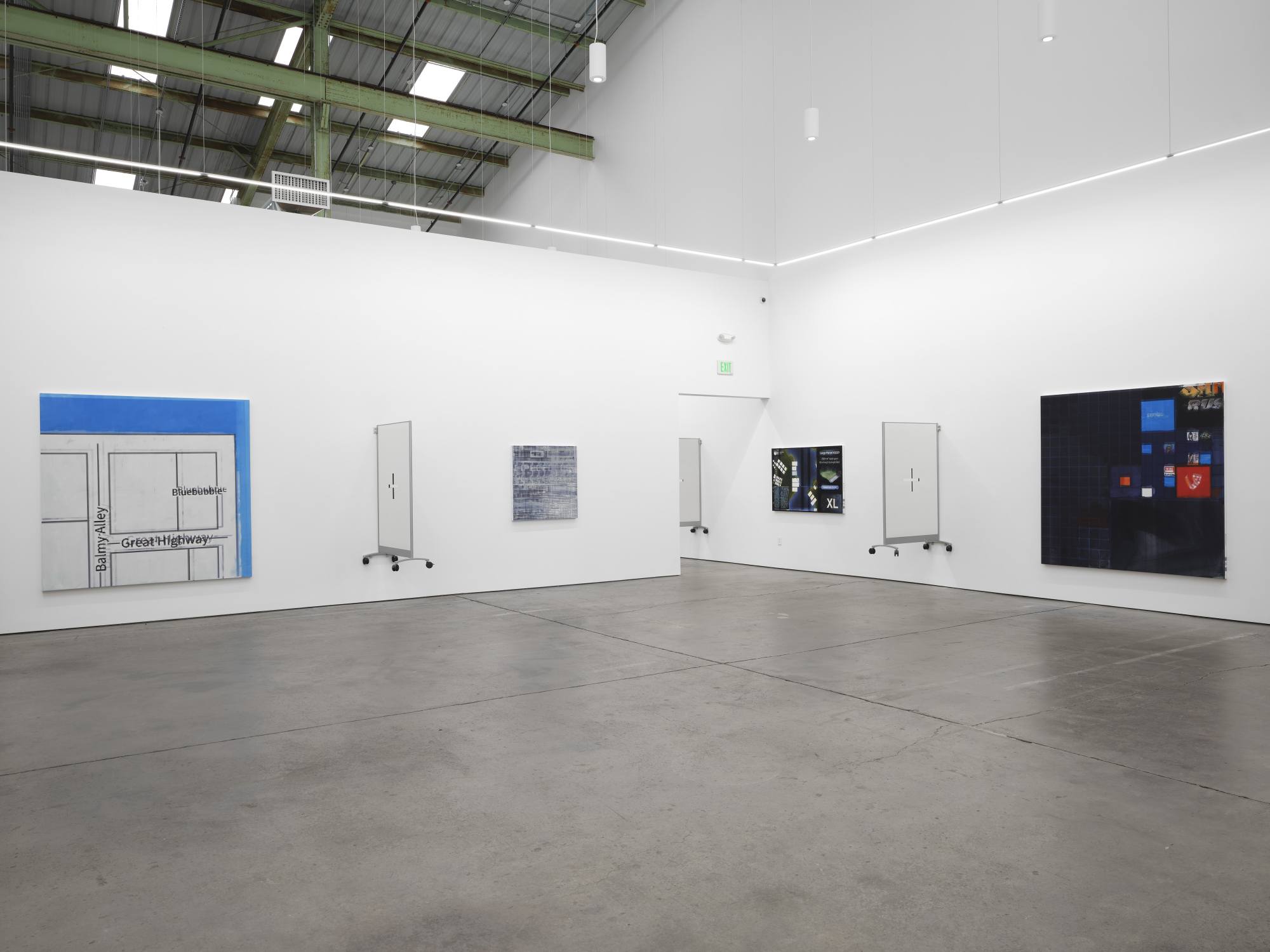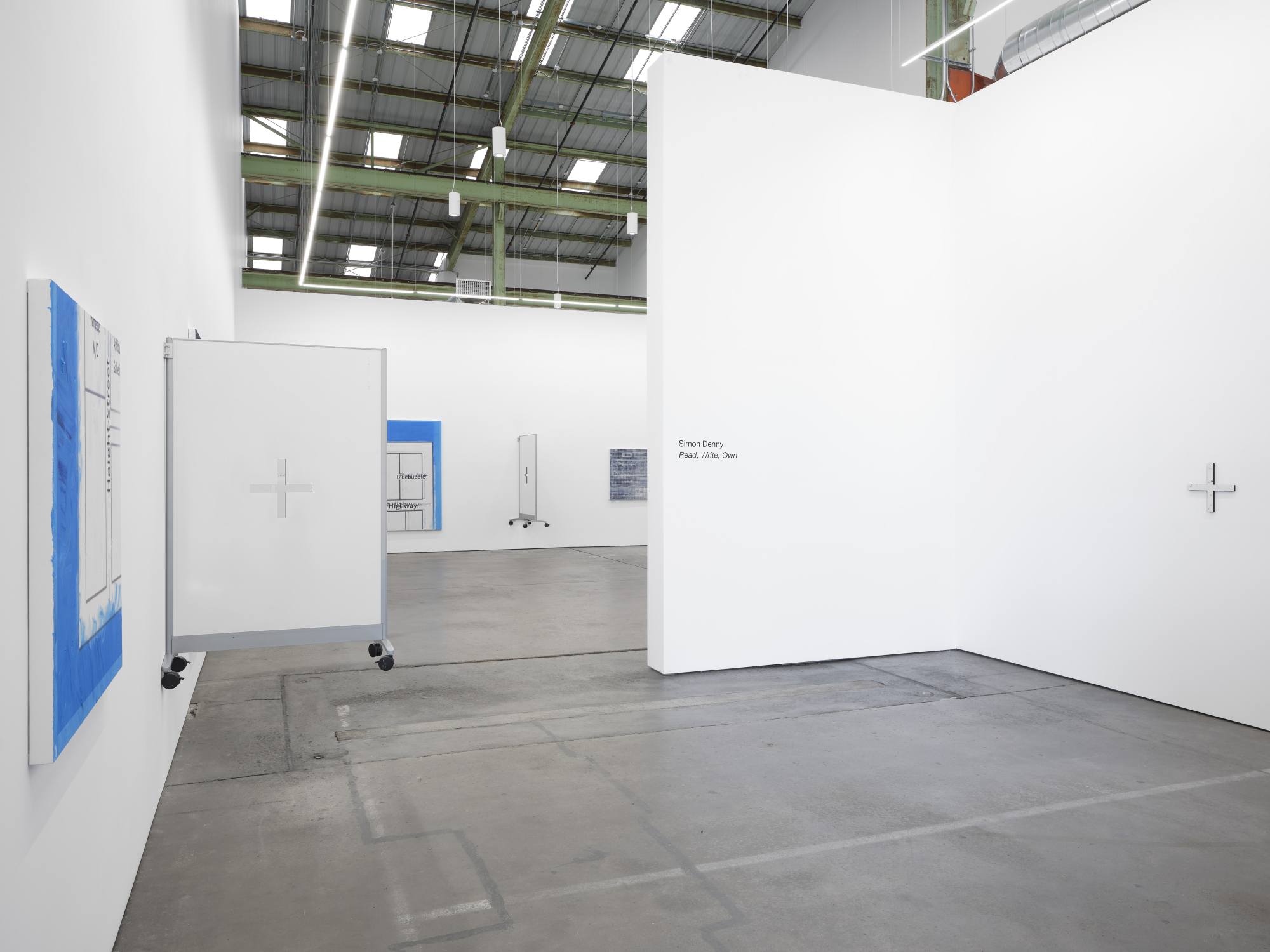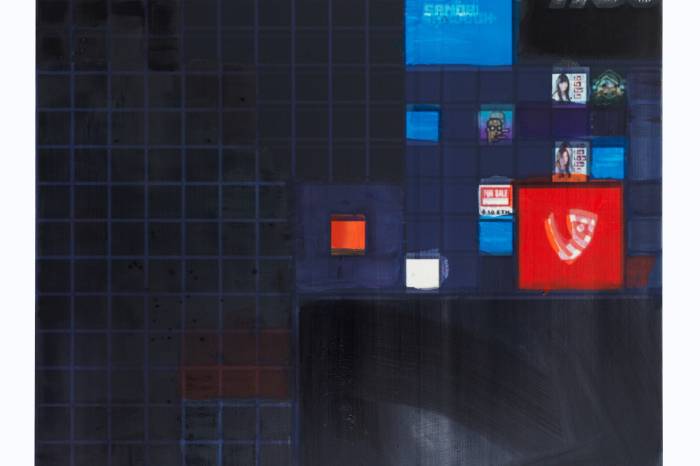Referencing the traditional painting genre of the landscape to consider the effect of digitization on the expansion of property and notions of land ownership, Denny’s Metaverse Landscape series depicts virtual properties in newly emergent digital worlds. Each painting portrays a tokenized visual representation (often resembling a simple stylized map or plan) that the owner of a piece of metaverse property receives when they purchase a plot of digital land in projects like Decentraland, The Sandbox, or Voxels – some of the earliest and most popular ventures invested in during the recent crypto/metaverse boom.
Created using oil paint and digital UV print technology, these paintings join analogue gesture with digital imaging, reflecting the uncanny affect often experienced when encountering digital worlds for the first time. Metaverses utilize aspects of pictorial languages developed to describe different places and contexts, and as such recall the street plans of modern cities in their use of grids to describe and allot territory. The paintings based on the Voxels metaverse depict a digitization of San Francisco – reminiscent in their composition of a kind of digitized modernist abstraction. Denny employs these motifs in his newest paintings, adopting methods utilized by colonial artists in their depiction of “new” and “empty” land in the 15th to the 19th centuries and beyond.
Reflecting on and working within the asset-formation structure which is essential to the success of these new properties, each canvas is linked to the property it depicts with a series of QR codes printed on their sides. These links point to the original property token or land plot depicted in each painting, and a new token that accompanies each painting, which adopts the motif from the board game Monopoly in a digital card that tracks the current owner of the original property.
Among these paintings, Denny intersperses another grid system, a space of design, and gesture. Whiteboards from the offices of Twitter’s campus in San Francisco, many with residual notations from Twitter’s developers, have been sculpted with a laser-cut that slices a “plus” symbol (the exact “plus” used when mobile tweeters begin a tweet in the current Twitter user interface) into the center of each board. The negative space produced in the center of each board by these “plus” extractions resembles a window, a graph, even arrow slits in castles or heraldry from shields – or a targeting system. These altered boards are hung between each painting, perpendicular to the walls of the gallery, forming a kind of viewing division with a cross-shaped window throughout the space.
